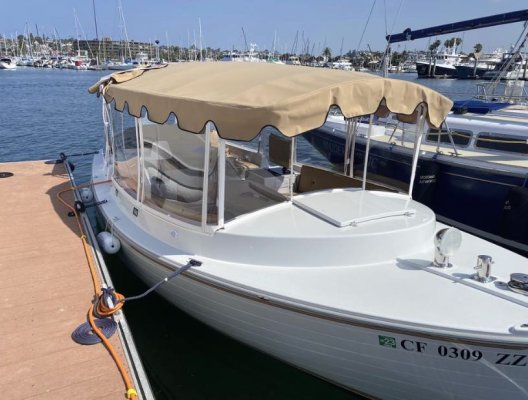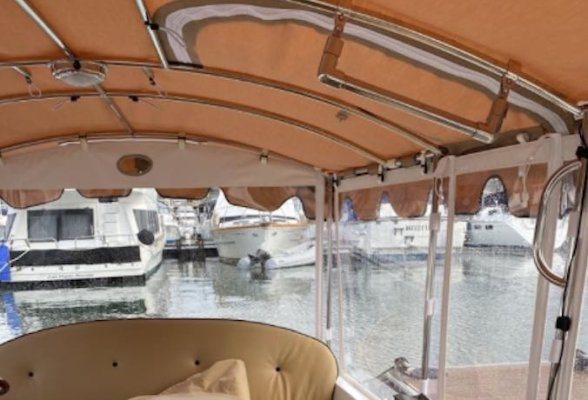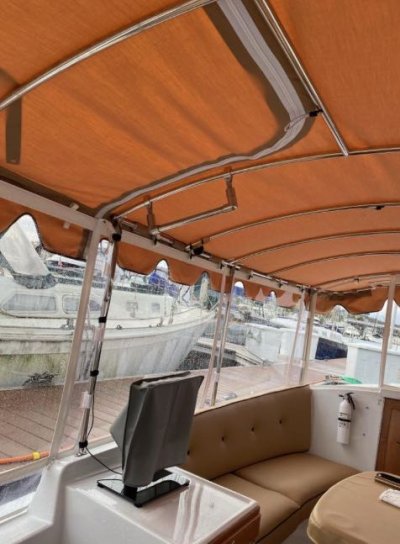socalrider
Guru
- Joined
- Feb 14, 2020
- Messages
- 1,014
- Location
- usa
- Vessel Name
- SEA WOLF
- Vessel Make
- 1979 CHB 41 Trawler
Hey all,
Thought there might be some interest in the way I've set up my solar after pulling my genset. This might not work for everyone, but I think it will do quite well for our use case: SoCal cruising with kids in good weather for a few weeks to a month at a time.
I have four Renogy 175kW flex panels mounted to my bimini fabric via magnets mounted to the panel grommets, paired to magnets on the bottom of the fabric.
The fused output goes via 8ga cable to a Renogy 60A charge controller to top off my 6Vx6x222aH 12V golf cart bank via 4ga cable.
I found on my last trip to Catalina that even 2 of these panels had my batteries topped off before noon. I bought four in anticipation of a water maker, but either way I have far more solar than I require, even in somewhat cloudy spring weather.
After doing tons of research on water heating to supplement our engine clarifier loop, I decided that given all this excess solar the easiest, safest & cheapest path would be to use my excess PV output to heat water. Intuitively this seemed crazy, but I think it'll work. Here's how I'm going to do it:
I got a 12VDC 700W dual element heater (can drop to 350W if I want) that should swap directly into my existing 6gal Whale 1500W AC heater. I also got a DC 140F thermostat (you can't use the AC thermostat) which will also be an easy swap.
To control the element, I got a mechanical relay, and finally a simple digital controller which can set the relay to turn on when battery voltage reaches a certain set point, and off again after a period of time *or* when battery voltage drops to a second set point.
This last piece will probably take some tinkering to coordinate with the Renogy charge controller set point; I can always bypass and switch the heater on manually if necessary (e.g. around noon when my batteries are full).
700W will heat 6 gallons of water from 68F to 140F in about 90 minutes. We're pretty frugal with water, though that could change if we end up with hot water and a water maker!
Total cost for the DC/solar heater components: about $100 shipped. I'll need to get a 60A fuse too. This seems way better than messing around with a diesel heater given that we don't really need cabin heat here. Hopefully this is helpful - I'll update if there's interest once I get it fully installed.
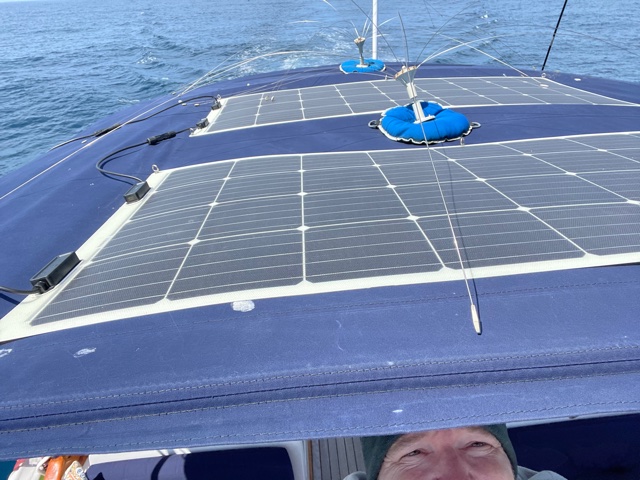
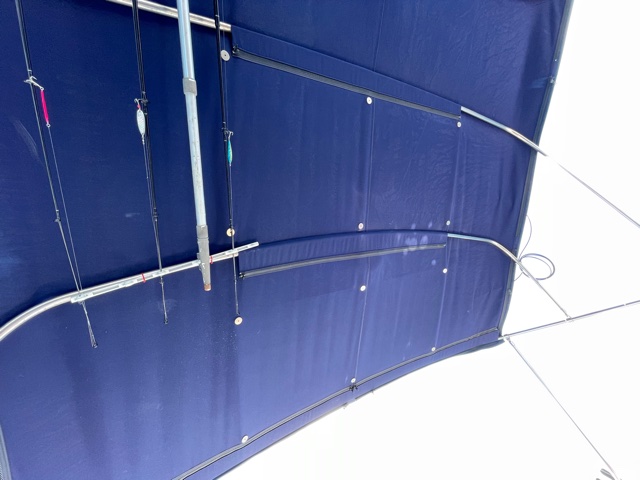
Thought there might be some interest in the way I've set up my solar after pulling my genset. This might not work for everyone, but I think it will do quite well for our use case: SoCal cruising with kids in good weather for a few weeks to a month at a time.
I have four Renogy 175kW flex panels mounted to my bimini fabric via magnets mounted to the panel grommets, paired to magnets on the bottom of the fabric.
The fused output goes via 8ga cable to a Renogy 60A charge controller to top off my 6Vx6x222aH 12V golf cart bank via 4ga cable.
I found on my last trip to Catalina that even 2 of these panels had my batteries topped off before noon. I bought four in anticipation of a water maker, but either way I have far more solar than I require, even in somewhat cloudy spring weather.
After doing tons of research on water heating to supplement our engine clarifier loop, I decided that given all this excess solar the easiest, safest & cheapest path would be to use my excess PV output to heat water. Intuitively this seemed crazy, but I think it'll work. Here's how I'm going to do it:
I got a 12VDC 700W dual element heater (can drop to 350W if I want) that should swap directly into my existing 6gal Whale 1500W AC heater. I also got a DC 140F thermostat (you can't use the AC thermostat) which will also be an easy swap.
To control the element, I got a mechanical relay, and finally a simple digital controller which can set the relay to turn on when battery voltage reaches a certain set point, and off again after a period of time *or* when battery voltage drops to a second set point.
This last piece will probably take some tinkering to coordinate with the Renogy charge controller set point; I can always bypass and switch the heater on manually if necessary (e.g. around noon when my batteries are full).
700W will heat 6 gallons of water from 68F to 140F in about 90 minutes. We're pretty frugal with water, though that could change if we end up with hot water and a water maker!
Total cost for the DC/solar heater components: about $100 shipped. I'll need to get a 60A fuse too. This seems way better than messing around with a diesel heater given that we don't really need cabin heat here. Hopefully this is helpful - I'll update if there's interest once I get it fully installed.




